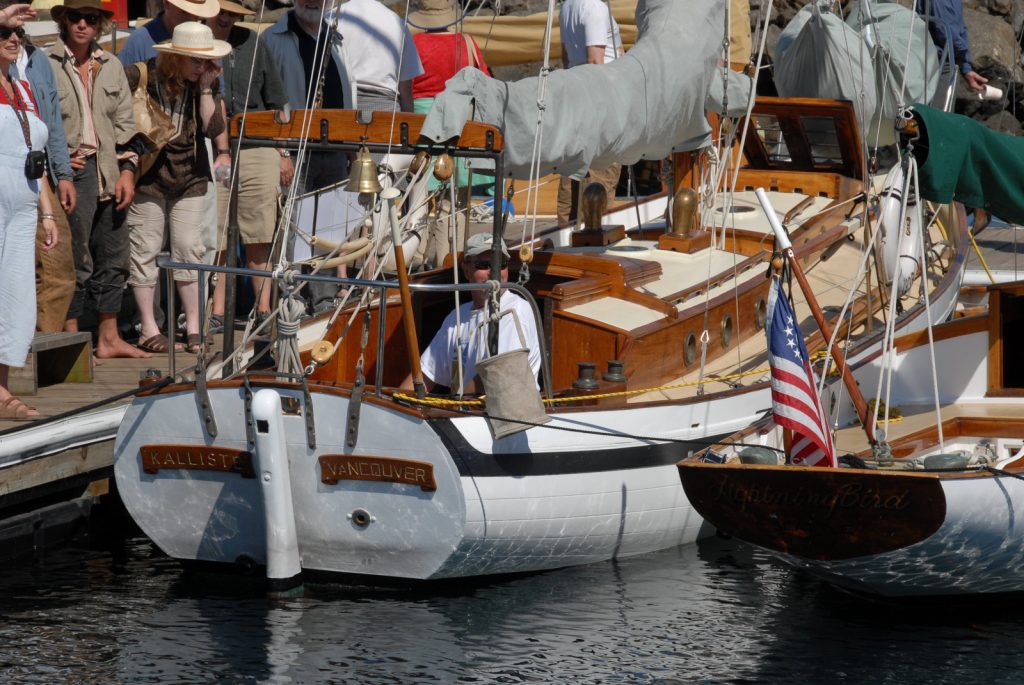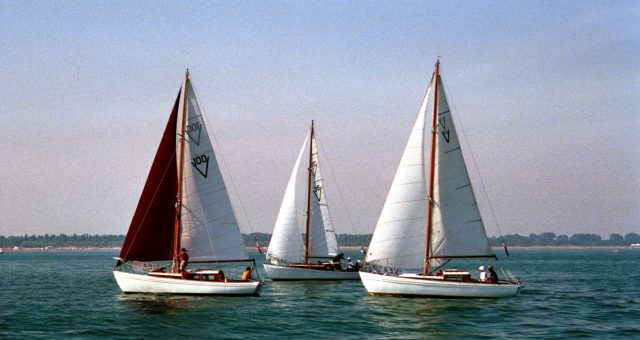
AUTUMN NEWSLETTER SEPTEMBER 2022
WoodenBoat Magazine have just released one of my articles about Vertues onto facebook https://www.woodenboat.com/vertues I am really grateful to them for doing this as it will introduce our little website to an even greater worldwide audience.
VERTUES FOR SALE
It has never been my intention in developing this website for Vertue enthusiasts, to use it for commerce. However, just as I try to report on all aspects of the boats, they do change hands from time to time, so it would therefore be inconsistent not to include some information about this activity. Unusually, there are at least ten boats that I have heard about, currently available. There are probably more. Of course, their basic details can be looked up right here in the ‘Boats’ section, by merely typing in the appropriate name and going ‘click’! The asking prices vary between around £3k and about £85k. I am not going to be too precise about the figures, as exchange rates are volatile, and this short review of the market is simply that. Having pondered the selection it is clear that you ‘get what you pay for’, up to a point, and the boats listed vary enormously in their details; but they are all real Vertues! They have all appeared before in VertueYachts.com, which is why they can now be looked up in the ‘Boats‘ database, accessible from every page.

Eleanor of Poole
The oldest of the Vertues currently for sale is Eleanor. As I mentioned in the last Newsletter, she has been sadly neglected by her previous owner, a mountaineer, but Roger Donkin, who recently bought her back with the intention of restoring her, has decided to find her a new home with a younger owner. A ‘long cockpit, short doghouse’ boat, she is ashore in south Wales and Roger’s email address is rogerdon37@googlemail.com .

Blue Jenny
We first reported on the sad situation of Blue Jenny in last year’s March Newsletter and I’m sorry to say that, like Eleanor, her situation has not changed. She is still available in Cape Cod for someone to take her on and would make a really marvelous project. Her owner can be contacted at p_otton@yahoo.com As can be seen in her ‘page’, Blue Jenny is one of the early Ocean Cruising Vertues and was built a few years after the design was conceived, following the epic transatantic passage by Vertue xxxv.
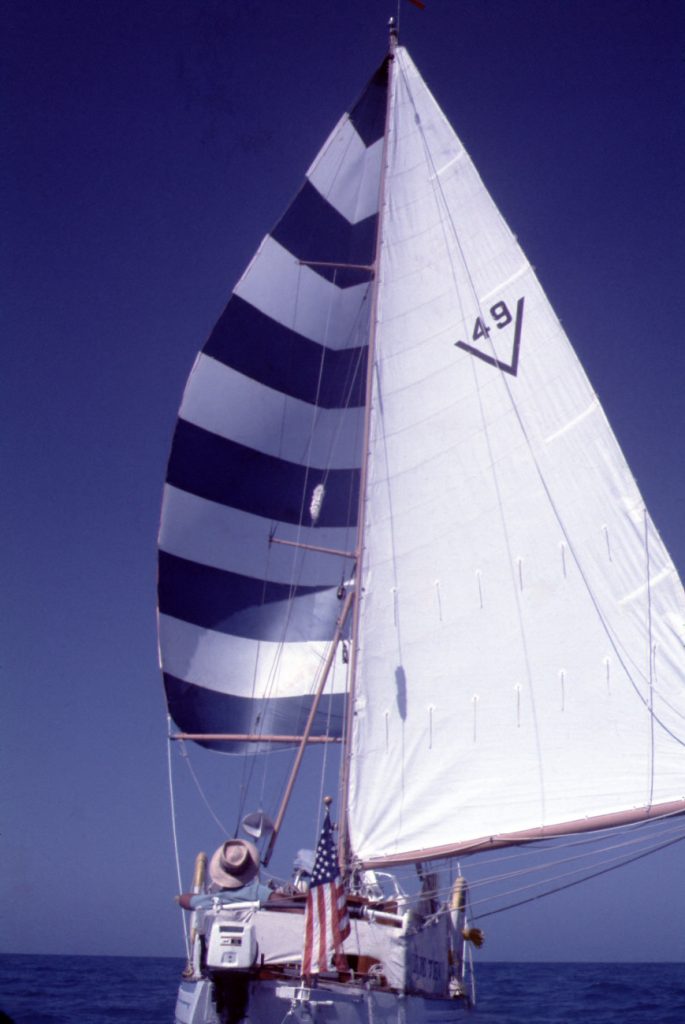

These pictures of Blue Jenny have very kindly been sent to us by one of her past owners who kept her in Florida. They show what a fine vessel she could be again.
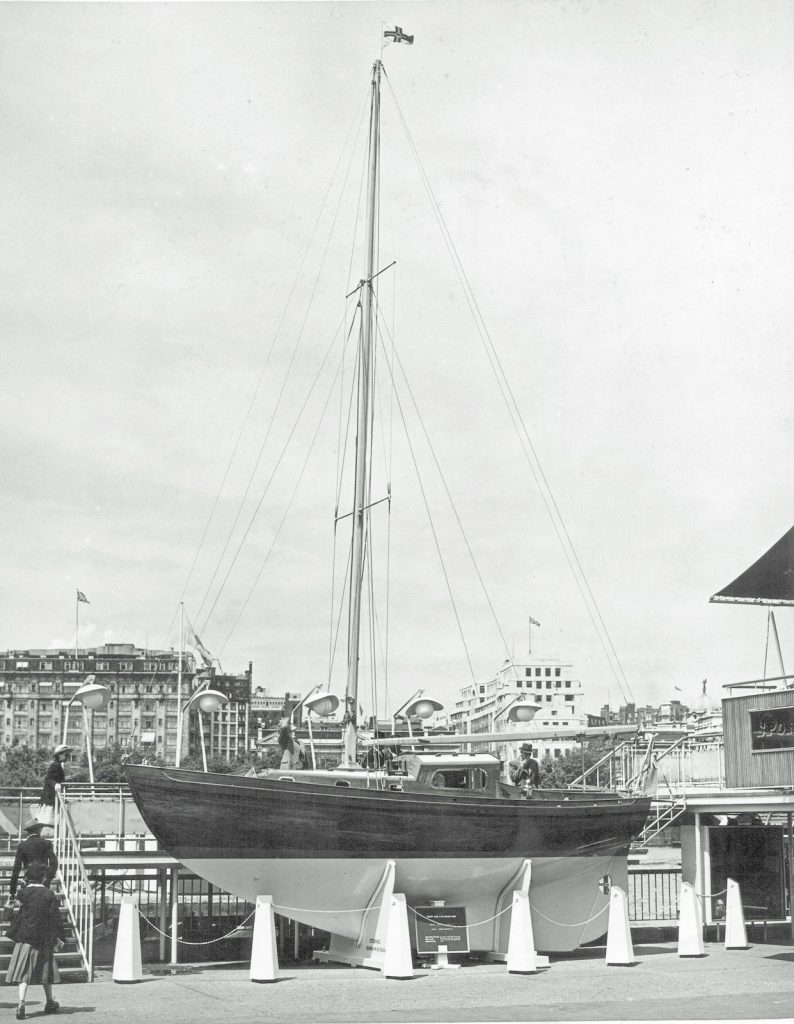
Vertue Fidelis
Here is Vertue Fidelis, on display in the black and white world of ‘The Festival of Britain’ in 1950. She was exhibited as a fine example of the best of British craftsmanship. She is now for sale through WoodenShips and is based in Dartmouth where her fine construction is evident. She is very reasonably priced at only £22,000.
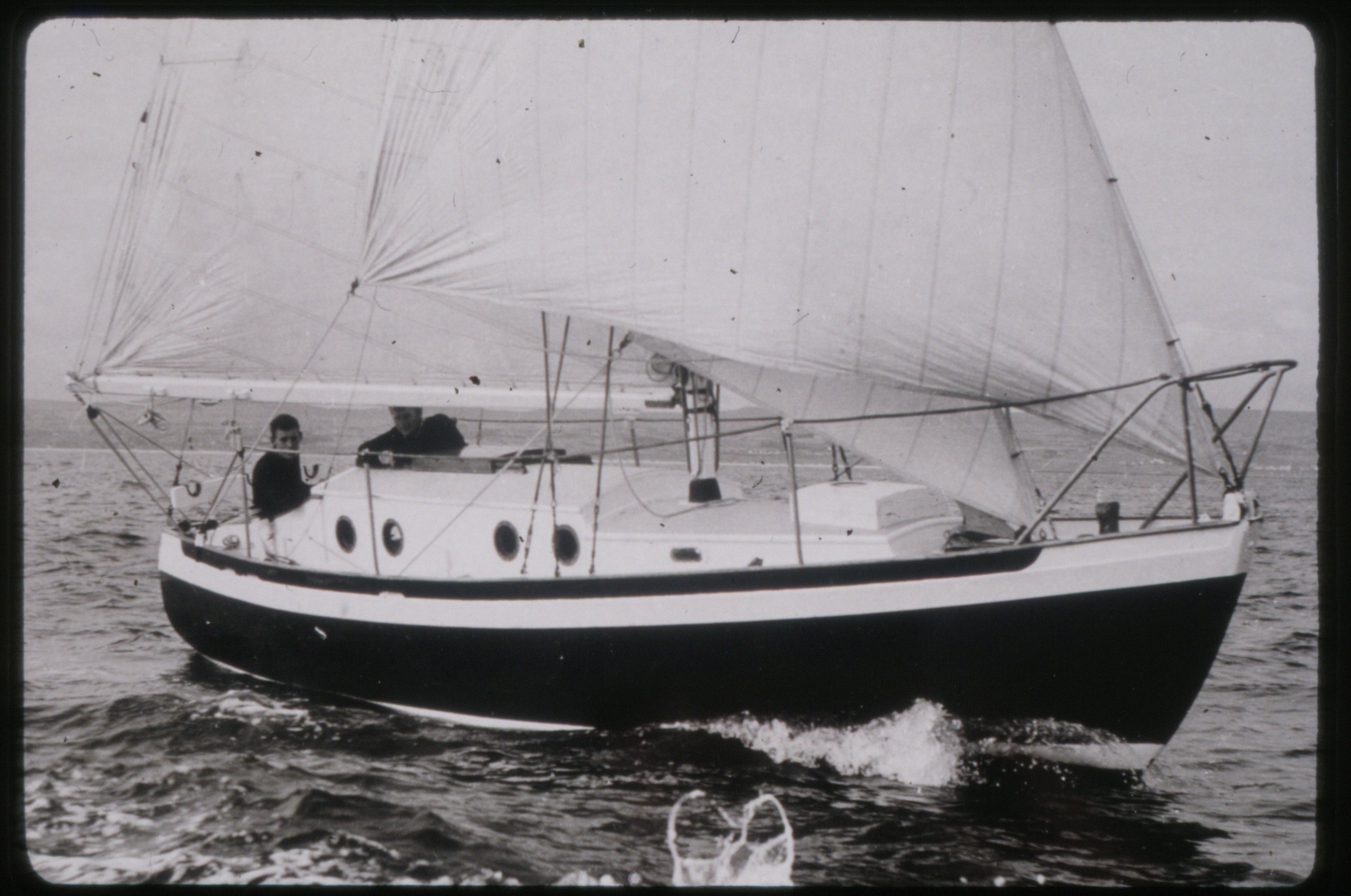
ICE BIRD Sailing in the 1970’s and as she is now.
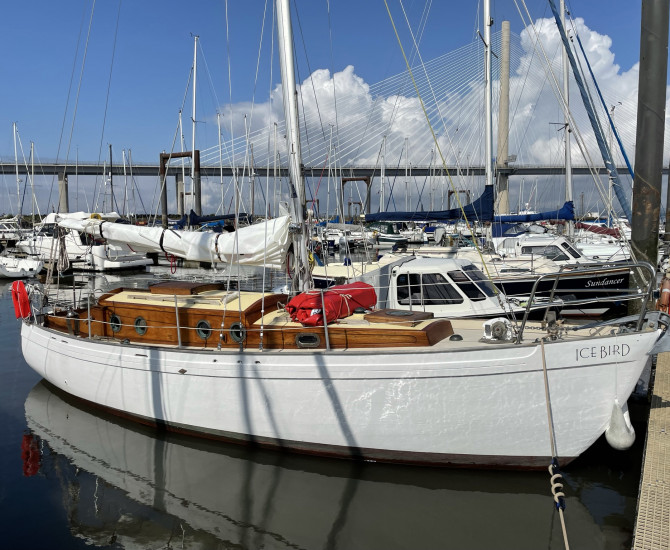
One of the first two Ocean Cruising boats to be built, Ice Bird is based on the Firth of Forth. Unusually, she is still cutter-rigged, and looks to be in excellent condition, and to my mind is very good value at an asking price of only £15,000. If you’re looking for a Vertue with an impeccable pedigree you can’t do better. She ranged the North Atlantic in her early years and beat her way up to the northwest coast of Iceland in the 1970’s. Her owner, Peter Maugham can be contacted at pete@fdpl.co.uk .

Pamela Jean
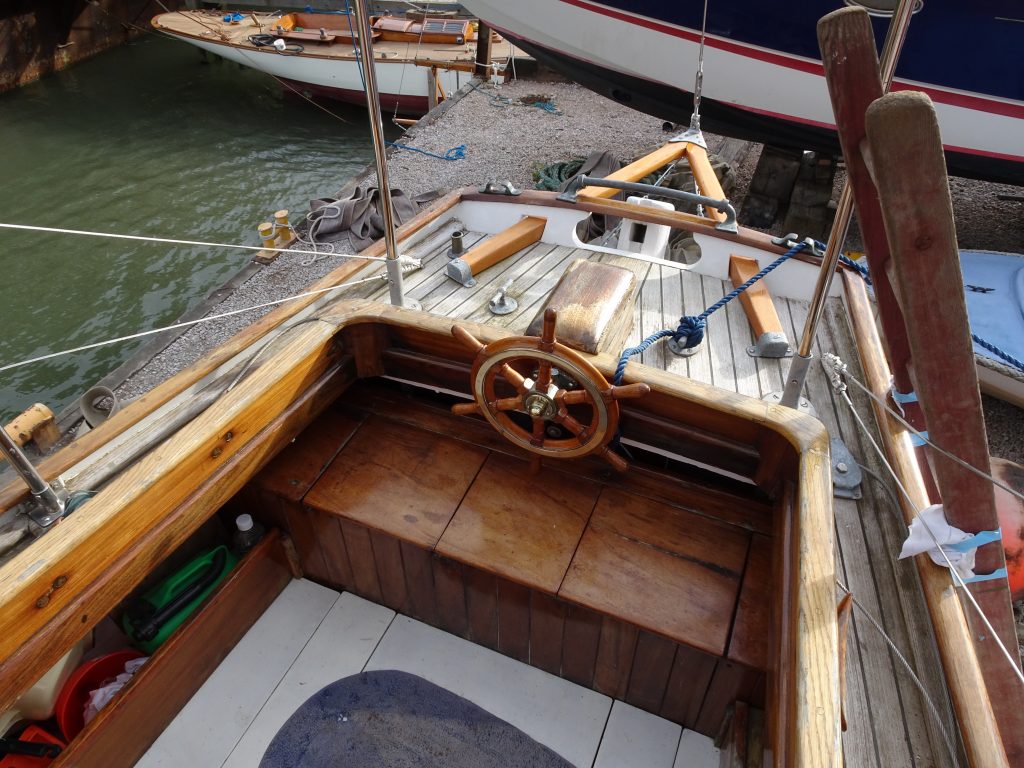
Vertues are diminutive, and their standard cockpits are only4’6″ long. So it is perhaps surprising that Pamela Jean is the only boat that we know of with wheel steering, as this free’s up quite a lot of space. She is for sale in Cornwall for £27,500 with boatshed.
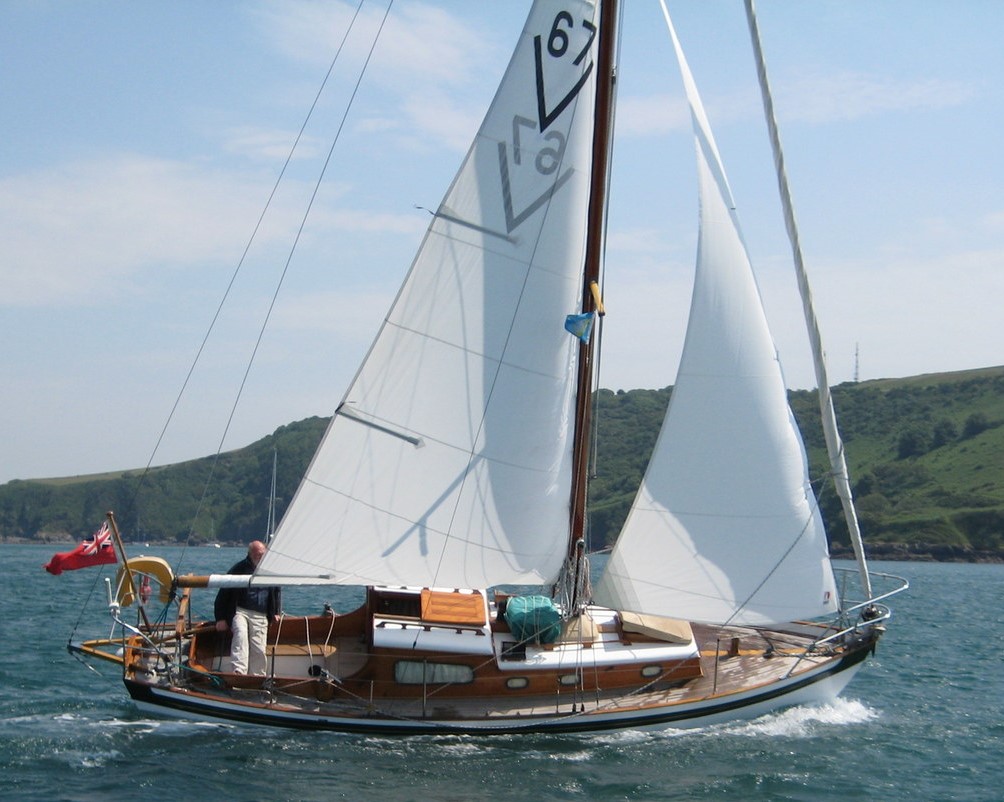
Like Vertue Fidelis, Betsinda is one of those Vertues whose design overcame the small cockpit size, by incorporating the 6′ long version. She has returned to the West Country but her owners have changed their plans and this immaculately maintained boat is now on the market with WoodenShips, with an asking price of only £25, 000.

Following the group of teak-built Vertues imported into England from Hong Kong in the early 1960’s, some English shipwrights were commissioned to build equally beautiful examples of the class in this country. Tanera is one of those, although she has been based in Italy for many years. She has been carefully maintained by a series of knowledgeable owners and is now for sale for the rather exalted asking price of almost £30,000. She has been seen racing against some of her Italian-owned sisters such as those three in this month’s opening picture, Return, Vertue xxxv and Bettina.
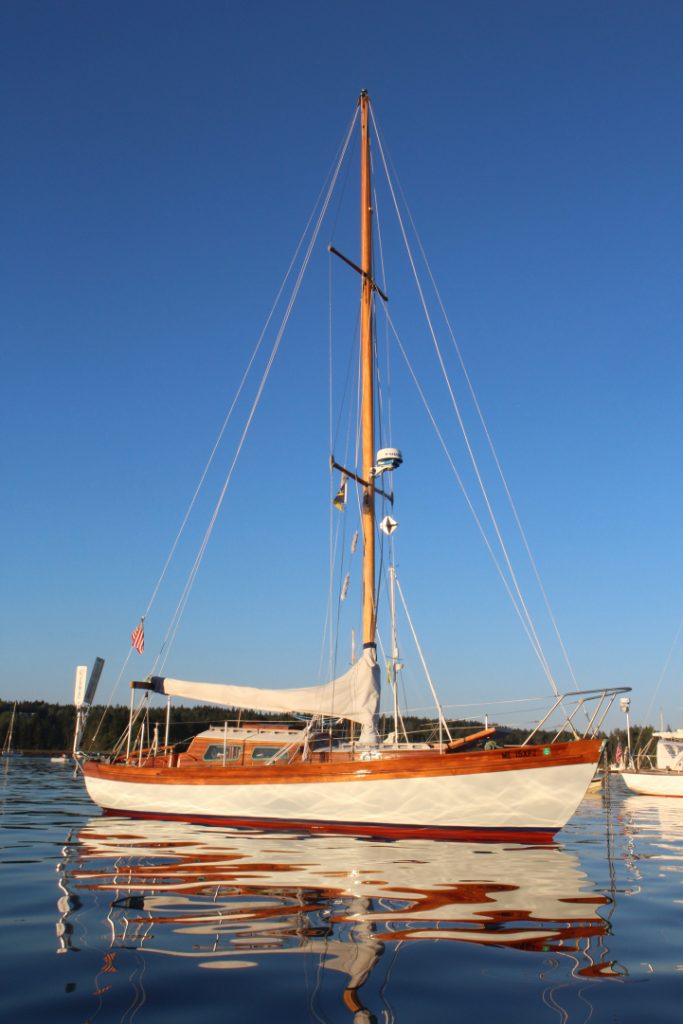
Flying Fish is well-known to these pages but Jack and Carolyn Bassett’s lovely creation is now on the market through alec@artisanboatworks.com in Rockport, Maine. One of the finest Vertues ever built they are asking an entirely reasonable £85,000 for her. She is really ready to go, anywhere she can float.
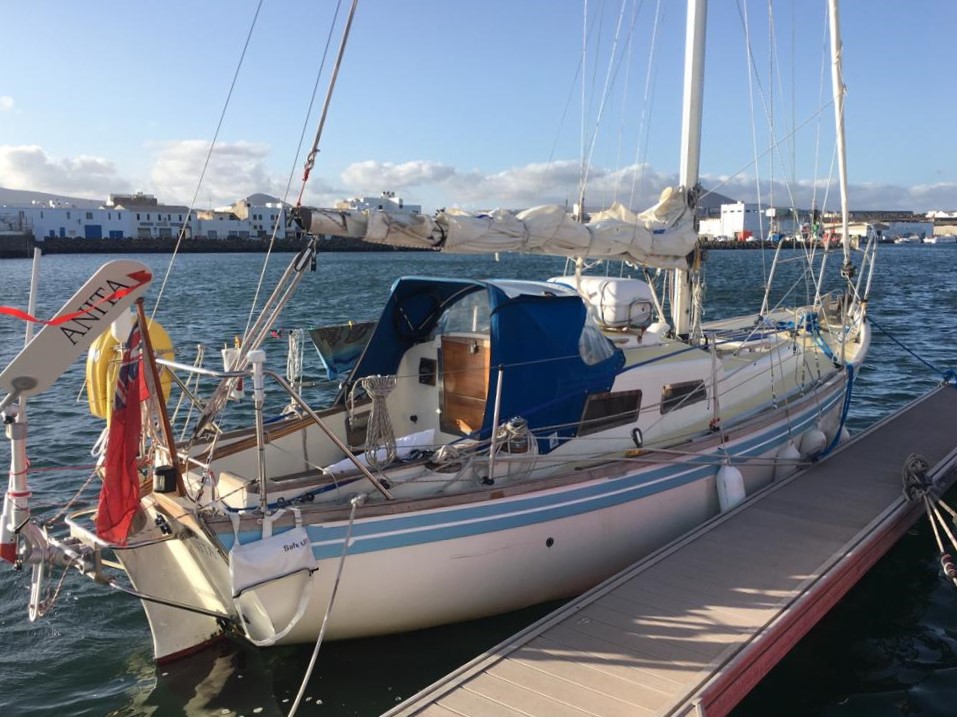
Anita is one of the earliest grp-built Vertues moulded by Bossoms but completed by her first owner. Her current owner, Luke Mander, luke.mander@gmail.com has completed some fine cruises in recent years, including taking her single-handed down to the Canaries and back to her home on the River Exe. He’s asking £18,000 for her. I believe that Vertue Voyager has recently sold at this price.
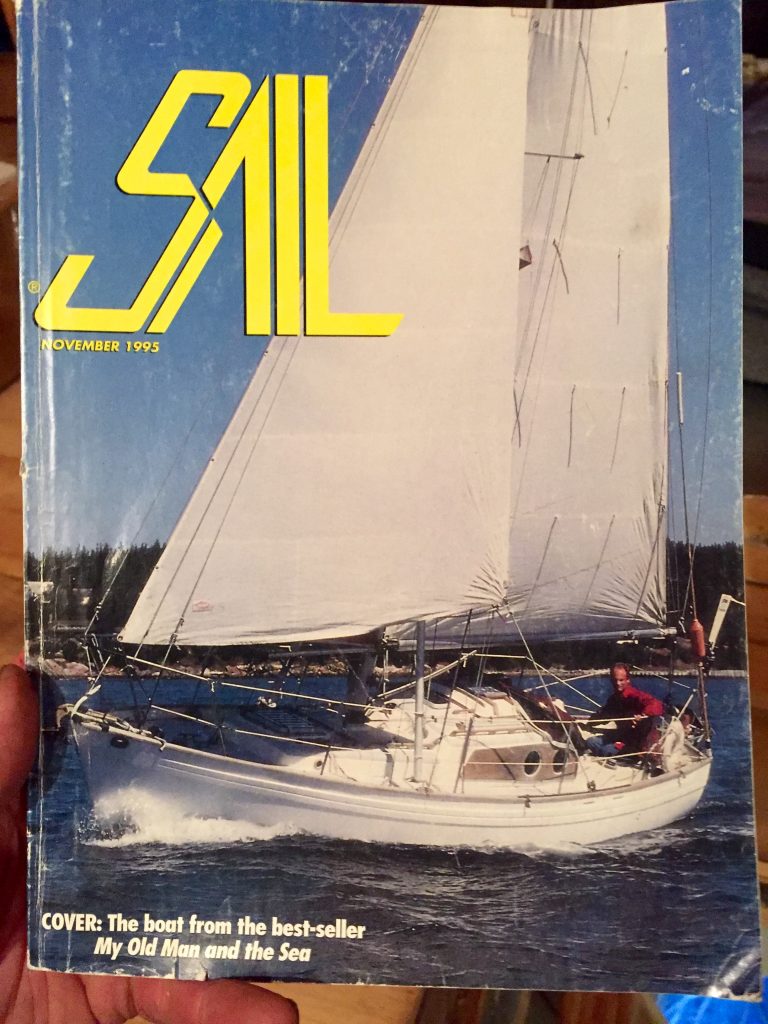
Sparrow

Here is the unmistakeable Sparrow showing her outstanding finish after a recent ‘deep’ refit. Daniel Hays has written to say that he is sadly putting her on the market with an asking price of £45,000. What price can you put on a boat with her pedigree? The heroin of the book ‘My old man and the Sea‘, she took Daniel and his father right around South America, ‘Doubling the Horn’ with certainty. She is only the second Vertue to do this after Bill Nance with Cardinal Vertue, which sadly no longer exists. Like Flying Fish, she is ready to go anywhere, and is also in superb condition. If you’re seriously interested, and can live up to her pedigree, I can pass your details on to Daniel.

_________________________
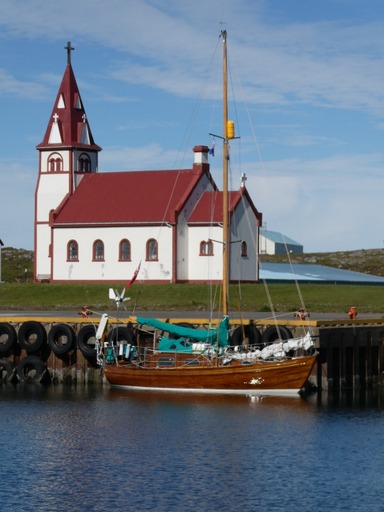
Towards Greenland
SUMARA IN ICELAND
Alasdair Flint, who has owned Sumara for many years, has very kindly allowed us to use his modest account of this year’s rather rugged cruise, ‘Towards Greenland’. After Matteo and Mea’s wonderful race around Britain earlier in the year, we are delighted to be able to bring another fine Vertue voyage to our worldwide audience.
Alasdair writes:
“I’m not sure when my desire to sail my Vertue all the way to Scoresby Sund in East Greenland started, but this year was to be my third attempt. My first try was rather a half-hearted tag-along to my sail to the Arctic Island of Jan Mayen which we made in Sumara in 2011. I knew we were really going to be too early, but we took the charts and equipment just in case the ice was to clear earlier than usual that year, which sadly it didn’t. My second attempt was with Will Stirling on board his yacht Integrity. Again, we were thwarted by the ice but managed a fantastic trip along the coast further south.
This year was going to be the big one. I had spent several years planning it. The boat was well equipped and in perfect condition. I arranged for a new Beta 16hp engine to be fitted a few years ago and I had a new propeller cast in aluminium bronze for extra strength. The teak decks were renewed, and the varnish stripped back to fresh timber. This year I replaced all the standing and running rigging. Sumara was fighting fit and probably in better condition than ever.
Despite thorough planning, the expedition wasn’t turning out to be plain sailing. Things started to go array at the very beginning. My first crew member went all quiet on me. This was to be a relaxing sail through the Scottish Islands to Ullapool. A mini shakedown-cum holiday. After a distinct lack of contact I eventually got through on the phone and suggested it may be best he pulls out now rather than at the last moment. While I was trying to find a replacement crew, my partner who was staying with me on the boat caught Covid and inevitably I eventually tested positive, although with no symptoms. All this made for a complicated start to a trip that was potentially complicated enough!
I prefer not to sail single-handed so I was pleased when I found that one of the staff in the marina was keen to accompany me on the first leg. We had an excellent although rather rushed sail to Ullapool where I was to wait until my next crew to arrive. We ruthlessly monitored the fuel consumption as I would need as much diesel as possible to motor around Scoresby Sund. We established the 16hp Beta uses 1.25L per hour at 2,000rpm giving about 4.5 – 5 knots in calm water. With Sumara’s 64L tank plus 40L on deck and 30L in the locker, I could theoretically motor for about 500 nautical miles!
I know quite a few people in Ullapool including the esteemed Boatbuilder, Tim Loftus with whom I share the RCC Tilman medal. I also had the pleasure of meeting up with Adrian Morgan who owns Sally II, “Vertue” No2.
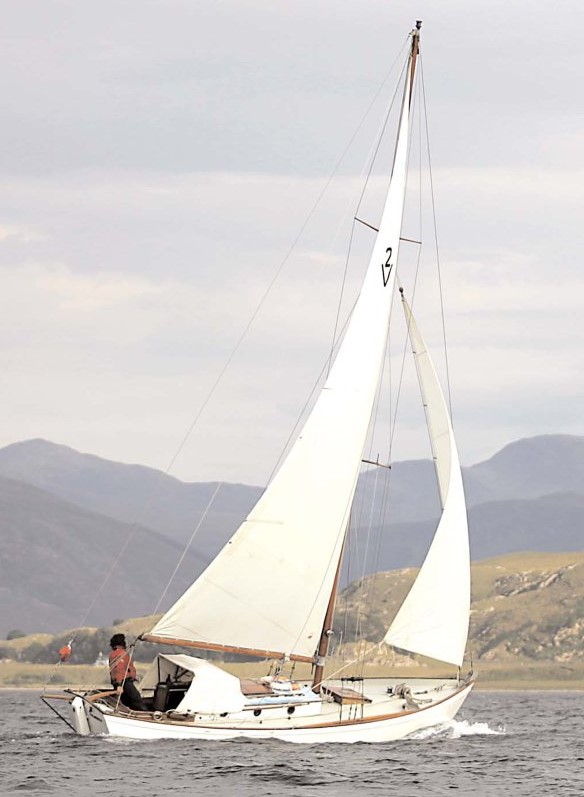
Sally II in Ullapool
When Jannicke arrived, we needed to make a snap decision regarding our departure to the Faroes. The wind was looking pretty strong for the next three days but during the following morning there would at least be a bit of south in it. This would enable us to get a slant to get out of Loch Broom into the open sea, a distance of around 10 nautical miles. If we didn’t set off early, it could be a very hard beat to windward trying to get out to the open water. We decided to go in the morning. During the pre-departure evening we were treated to a first-class curry by our friends Dan and Charlotte, we slept well that night!
The voyage to the Faroes was relentlessly rough but fast. Much of the journey was with two reefs in the mainsail plus a reefed Yankee and reefed staysail. The decks were awash, the lee rail buried and there was constant heavy rain and a cold wind. After a while we discovered a little “deck” leak, something new to Sumara. It succeeded in soaking our sleeping bags. I eventually tracked it down to a hairline crack in the deck paint and seem to have resolved it. I should make it very clear the leak was nothing to do with the outstanding new decks laid by Johnston and Loftus which remained resolutely watertight.
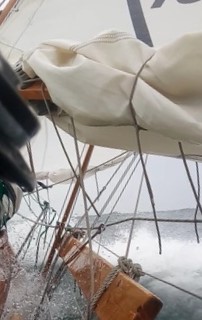
Sumara triple reefed and storming along
As we eventually approached the strong tides surrounding the Faroes, the wind dropped off and we motored into Torshavn after 2 days and 20 ½ hours, an average VMG of 3.79 knots. Jannicke was still smiling but may be wary of another sail on Sumara; it was a cold, wet and pretty bumpy journey!
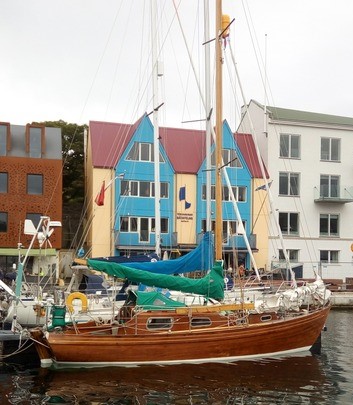
Sumara moored in Torshavn, one of my favourite ports
We enjoyed several days in the Faroes whilst waiting for Torsten to arrive. We tried not to work out what the beers were costing! During the sail, my Aerogen wind generator decided to finally pack up. The swivel bearings had collapsed, and the debris caused a current short around the boat which needed to be quickly addressed. I’m pretty hopeless with electrical gear but luckily Torsten is a bit of an expert. Gale force winds and pilot strikes delayed his arrival, but as the weather was too fierce to set off, it was no problem.
I’ve sailed to the Faroes in Sumara four times now. On two occasions we have taken the route north through the Sudini Channel which involves trying to avoid a fierce 12 knot current through a narrow and twisting section under the bridge connecting the islands. The channel is ideally taken with a slight counter current to allow steerage between the shallow patches and timing is critical. The last time I went through we encountered gale force winds despite relative tranquillity around the corner in Torshavn. That time we sailed under bare poles for a while to help reduce our speed. The narrow passage amplifies the wind, so I was keen to avoid it this time with a moderate headwind forecast. After discussions with Torsten, who is a very experienced sailor, we opted to go right around the northern tip of the islands. It added a few miles but suited the wind direction. On 13th July we set off for Iceland.
We doubted that we would make it all the way to Husavik on the north coast with the short weather break showing on the dreaded Windy app. Our options were making landfall at Seydisfjordur (260 nm) or preferably further north Vopnafjordur (300 nm). It seemed to take ages to break away from the influence of the Faroes tides and the sailing was hampered by confused and lumpy seas. Eventually we got into the groove and were making 5 knots with one reef, yankee and staysail. I was glad to have Torsten onboard because we were constantly changing sails to suit the variable conditions. Sumara’s sails are hanked on so it’s not just a matter of unfurling a bit more, you have to get on the pitching foredeck and work up a sweat. As the wind genny wasn’t yet working we needed to run the engine for a short while to perk up the 120 amp hour general services battery. After 3 days and 21 hours we moored up in Vopnafjordur, an average VMG of 3.22 knots. Customs in Iceland should be taken very seriously, they contact most boats via VHF from spotter planes. It is worth taking care to be fully compliant.
While planning the next leg to Husavik I made a bit of a navigational cock up. All of my charts, except this particular one, has each degree marked boldly on the side, but this chart had every two degrees marked boldly on the chart. I hadn’t spotted it when I set my dividers and declared a short 80 nm sail to Husavik, with the crucial tidal gate only 24 nm away. As it happened even with the correct distance of 48 nm to tidal gateway at the Langanes Peninsular we would never have made it as we spent five hours tacking out of the harbour’s bay. Once clear of the bay we accelerated on a wild ride at hull speed rounding the headland in thick fog in perfect time for the following tide. By 22:15 GMT we were moored in Husavik having completed the journey with VMG of over 5 knots. An hour after mooring we were enjoying a good “session” on board Danu, an Irish yacht also heading to Scoresby Sund.
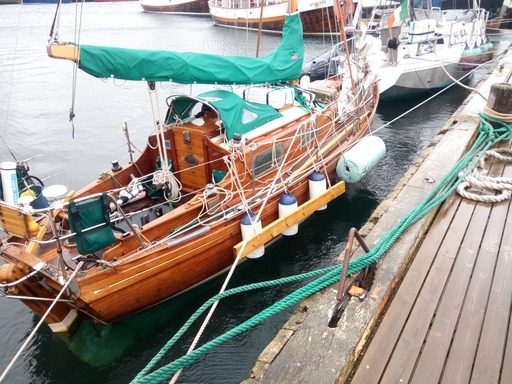
I was soon to be joined by Ray who was to be my Greenland crew and Torsten was to fly back to London. While in Husavik we managed to repair the wind generator, the Eberspacher heater and replace the broken sail slides. The boat was now ready for its next big adventure.
The ice in Scoresby Sund still hadn’t cleared but I was always aware that we may need to wait in Husavik for a while. What I wasn’t prepared for was the apalling weather. At one point the Icelandic news was warning hikers against heading out due to high winds, heavy rainfall and low temperatures. The wind seemed to be blowing relentlessly out from Scoresby Sund. The locals were saying it was the worst summer they could ever remember. Each morning we would hesitantly open up the Windy app only to find our possible weather window had just disappeared. I was beginning to get spooked by the weather forecasts. It could be climatic change affecting the weather patterns, but I have a theory that these forward predicting weather apps might be spoiling the fun. There was a time, not so long ago, when you would wait for a 24 hour forecast and just cast off. We always seemed to get to the destination. Now we are told that impending doom is on its way up to 14 days in advance. Perhaps we are best-off not knowing?
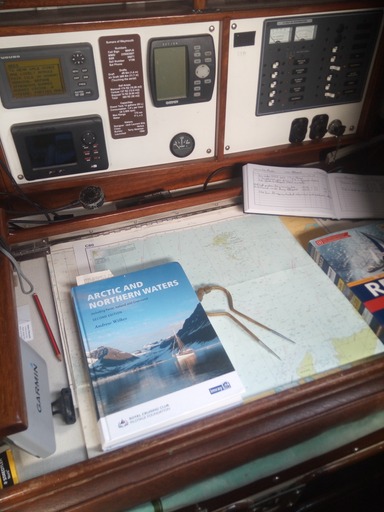
We waited until the ice had cleared then waited again for a decent break in the weather. It is 300 nm to Scoresby Sund from Husavik and we needed to arrive in quiet weather. Sumara is a small boat so we can’t just follow the big boys who can charge up there in two days. I needed to be sure I could get into the safety of the fjord. After two weeks it was becoming tricky, time was ticking away and if it took this long for a weather break to get there, just how long might we be stuck there waiting for a break to get back? With return plane tickets booked and another crew change due in Reykjavik I eventually made the very difficult decision to abandon the attempt. We would instead return to Scotland via the east coast of Iceland.
As the weather was so erratic, we decided to stop at Raufarhofn, Iceland’s most northerly port before attempting to round the notorious headland. What a whacky place Raufarhofn is!

Sumara in Raufarhofn, the most northerly harbour in Iceland.
We had the harbour to ourselves to begin with, but the fair weather brought in a few more yachts. Our next stop was to be Stornoway with an option of calling in a Seydisfjodur which is 115 nm away. When the weather turned favourable, Sumara and two other yachts set off towards Langanes.
As we made faster than predicted speed, we were going to round the headland three hours too early. I called up the yacht ahead of us and asked if he could relay the sea state as he passed the peninsular. All was well and we rounded the headland a biscuit toss off the beach in calm seas. The calm weather wasn’t to last. It was to prove a very tricky sail with strong winds dying off then building again. The lee of the land simply accelerated the wind which was gusting up to force 7 and had us triple reefed. We eventually moored in Seydisfjordur at 16:14 on the 10th August. This was to be a pit stop as we hoped to sail on at 06:00 the following morning. Several hours were spent waiting for customs clearance, they insisted on visiting the yacht before we set off. Nevertheless, it didn’t stop us getting ashore for a few beers and a decent meal.
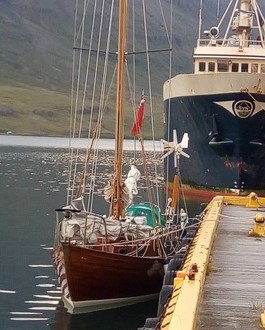
Sumara moored in Sedisfjordur, East Iceland
I confess it was with a great feeling of relief that we got away in the morning and set sail toward Stornoway 480 nm away. We had mixed information regarding the weather that we should expect and although it was a gentle start it didn’t last for long. Once we cleared the coast, the wind build steadily up towards force 6 southerly.

Enjoying a quiet moment sailing out from Sedisfjordur
As we were headed by the wind, we were being relentlessly pushed towards the Faroes and I was really keen not to stop there and possibly get stuck there for a few days. Eventually we cleared the islands and the wind came behind us. We stormed towards Stornoway with a triple reefed main and poled out yankee. Ray was dying to have a Stornoway white pudding for breakfast which we didn’t quite achieve. Ray flew out armed with a white pudding and Grit, my partner, flew in for the final crew change. Grit at long last brought fair weather with her and for the first time in about 80 days we actually enjoyed a warm and gentle sail down through the West Coast of Scotland back to Dunstaffnage.
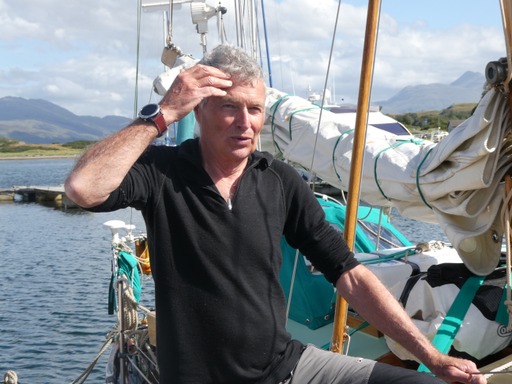
Phew, finally returned to Dunstaffnage.
I never made it to Scoresby Sund. Would I try it again? I promised myself that I wouldn’t, but now I wonder. If I try again, it would be with a single experienced crew willing to stick with the whole voyage. So, who knows.
___________________________________
THE VERTUE DESIGN DYNASTY Part 2
This is a short description of those boats, all designed by the Laurent Giles Partnership, that share some of the design characteristics of the Vertue class.
(See the last Newsletter for Part 1)
As Andrillot‘s exploits started to be noticed by the south coast cruising fraternity in the mid 1930’s, several more close sister-ships were commissioned. By the end of 1939, nine more were afloat, all with the signature, Giles’, masthead bermudan rig, with forestay from stemhead to upper spreaders. These included Monie, which was driven hard by Humphrey Barton and his equally tough wife, and whose drawings were used with only small modifications for the rest of the pre-doghouse boats, up until 1946.
Meanwhile, yacht racing was becoming ever more popular. In 1930 Major Cyril Windeler, a member of the Island Sailing Club in Cowes, had suggested that a race around the Isle of Wight might be rather fun. He was concerned that many of the existing races might be a little too arduous for smaller boats, and that this 60 mile race might become popular.
By 1937 he had seen the launching of several Vertues and approached the Laurent Giles Partnership to discuss the design of a larger version, for racing and cruising. This resulted in the building of Kalliste a 28 foot bermudan sloop, 24′ 6″ lwl, 8′ 1″beam, and 5′ draft. . She was built only a few hundred yards down the hill from the Practice’s offices at the Berthon Boatyard in Lymington.
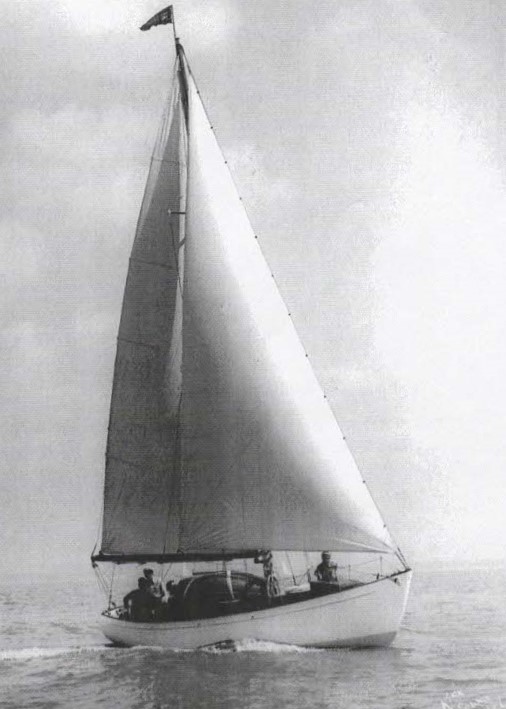
KALLISTE
The proportions of her hull and rig clearly show Kalliste’s pedigree as a slightly larger sister of the Monie design. Here her dinghy is neatly stowed over the saloon coachroof, and her lines show an even greater sheer and accentuated tumble-home right aft. This latter feature is shared by several of the boats in this ‘dynastic’ line including Valfreya, Fairlight and Dyarchy.
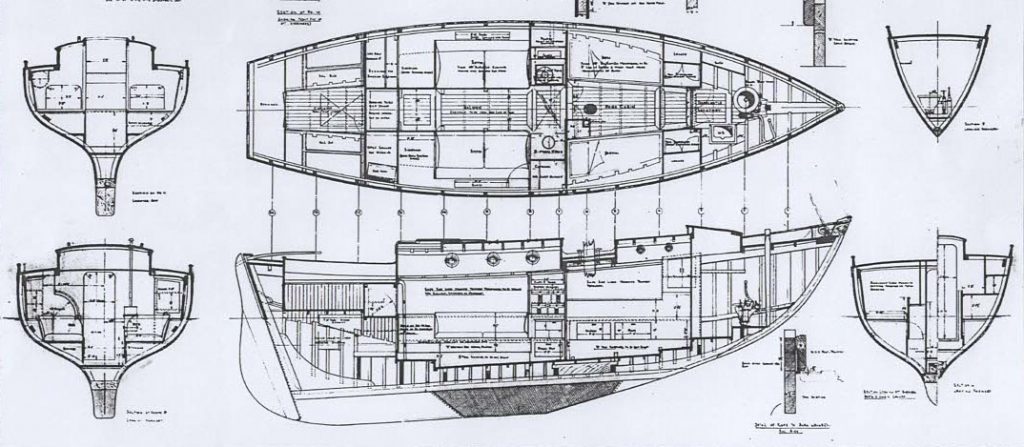
Clearly Kalliste’s midship section and hull profile declare her development from the Vertue, and the extra three feet of length on deck, and greater headroom, enabled the accommodation to be improved beyond recognition. It is incredibly ingenious and I have never understood why more true sister-ships have never been built. She is one of my favourite Giles designs because she is big enough to provide a proper sleeping cabin still well ‘into’ the ship, clear of the working saloon/galley/chart table area, and yet still provides a useful foc’sle space for the heads and storage. She doesn’t need a doghouse for headroom, and can therefore stow a tender abaft the mast, in arguably the only ‘proper place’.
All of this was recognized by Eric Hiscock who wrote in his journal whilst Wanderer III was being built that “The design was an enlarged version of Kalliste“. I will be returning to this in a future Newsletter.

Kalliste’s wonderfully practical and attractive accommodation.
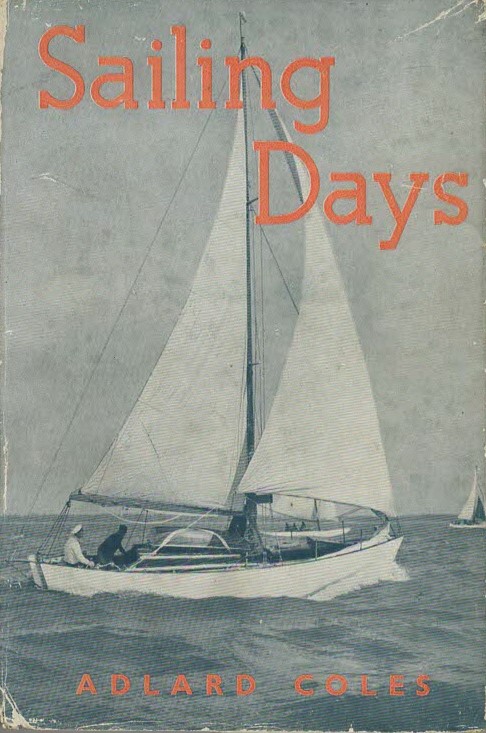
Major Windeler’s faith in Giles’ ability was not mis-placed, for in 1939 he was able to sail her to victory in that year’s Round the Island Race. Only five years later, as the end of the War came into sight, Adlard Coles used a photograph of the boat on the dust-cover of his first ‘post-war’ book in which he looks ahead to the coming era of yachting, as a new dawn after the long night of total war.
After many years as a ‘cruiser-racer’ Kalliste was taken to the Pacific ‘northwest’ where she has been based ever since. I am greatful for the use of these colour photographs which were taken by the late, much lamented, Bill Cabeen, over a decade ago whilst she appeared at one of the Port Townsend Classic Boat festivals. I’m afraid I have lost touch with Kalliste‘s current owners and would very much like to hear from them.
(A quite similar boat was built by Mashfords many years ago, and she may well share the hull lines of Kalliste but lacks the sheer. However, as neither her accommodation nor deck layout bear much resemblance to those of the original boat, I feel she is hardly comparable, for it is those features in particular that make the original boat so delightful, to my eye.)
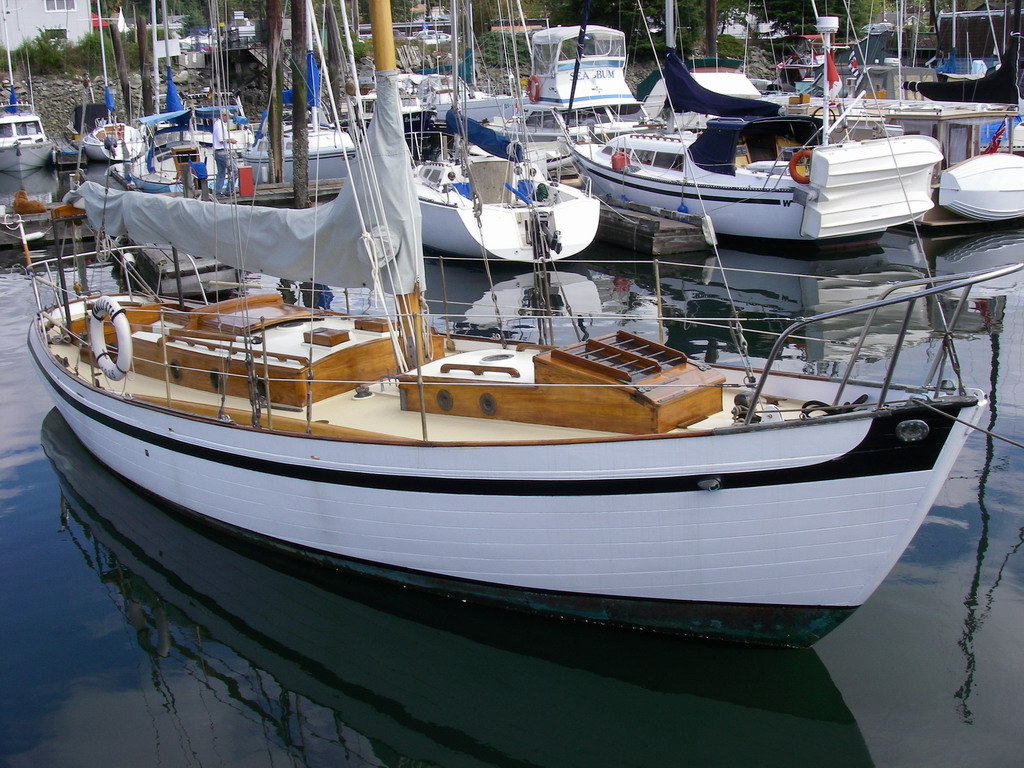
The delightful ‘large Vertue’ Kalliste in Port Townsend WA
As you can see, we are keen to include photographs and writing provided by other Vertue enthusiasts. Both Matteo’s and Alasdair’s contributions have enlivened our modest pages in recent months. Please don’t hesitate to help keep our pages filled! I am planning to widen the scope of our little publication to include some more information about other Laurent Giles designed boats in furture and hope that you have already enjoyed the two initial posts about the Vertue’s ‘design relatives’.
We have delayed publication until the period of mourning for the death of our Dear Late Queen Elizabeth was over. Long Live King Charles III!

